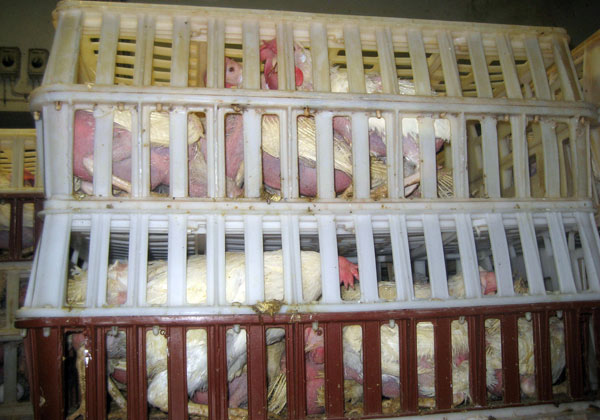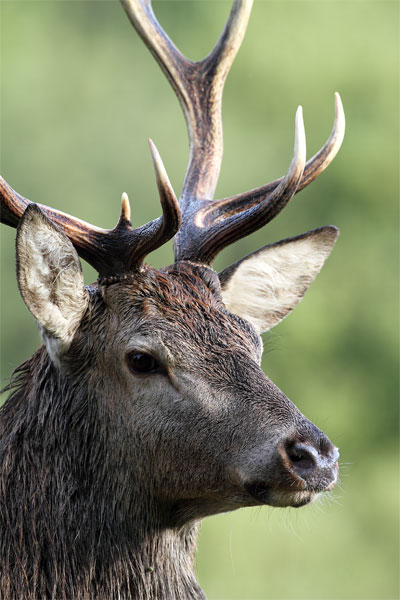Feeling
1. Feeling - which sense?
Which sense is most relevant to a situation at the slaughterhouse?
Use of cattle prod.
Cold
Pressure
Pain
Touch
Heat
NOT Working at the moment!
2. Feeling - which sense?
Which sense is most relevant to a situation at the slaughterhouse?
Use of driving disk.
Cold
Pressure
Pain
Touch
Heat
NOT Working at the moment!
3. Feeling - which sense?
Which sense is most relevant to a situation at the slaughterhouse?
A summer day with high humidity.
Cold
Pressure
Pain
Touch
Heat
NOT Working at the moment!
4. Feeling - which sense?
Which sense is most relevant to a situation at the slaughterhouse?
A ”bindsle???” that is too tight.
Cold
Pressure
Pain
Touch
Heat
NOT Working at the moment!
You can read more about the meaning of the animal’s Feeling at the slaughterhouse in the module Handling.
Remember!
- The animal’s feeling is actually composed of five different senses: Touch, pressure, heat, cold, and pain.
- When you touch the animal it should be done carefully but firmly, and without causing pain.
Poultry


Poultry are subjected to both touch and pressure in the transport containers. Photo: Lotta Berg, SLU.
Poultry have an abundance of nerves in the beak that are important when they search for food. When the beak is cut, which is not allowed in Sweden, the nerves of the beak are hurt.
This can lead to great and prolonged pain. Poultry also have sensory cells in the skin and the bones, which sense vibrations
from i.e. an approaching predator.
When poultry are hanged by the legs a strong, sometimes painful pressure against the legs can be applied if the loops are too small.
Photo: Lotta Berg, SLU.

1. Feeling - which sense?
Which sense is most relevant to a situation at the slaughterhouse?
A summer day with insufficient ventilation in the leirage ”avdelning???”.
Cold
Pressure
Pain
Touch
Heat
NOT Working at the moment!
2. Feeling - which sense?
3. Feeling - which sense?
Which sense is most relevant to a situation at the slaughterhouse?
4. Feeling - which sense?
Which sense is most relevant to a situation at the slaughterhouse?
A loop that is too tight in the electric bath..
Cold
Pressure
Pain
Touch
Heat
NOT Working at the moment!
5. Feeling - which sense?
Which sense is most relevant to a situation at the slaughterhouse?
Slauhterhouse personnel that carefully lift the birds from the conveyer.
Cold
Pressure
Pain
Touch
Heat
NOT Working at the moment!
Remember!
- The bird’s feeling is actually composed of five different senses: Touch, pressure, heat, cold, and pain.
- When you touch the bird it should be done carefully but firmly, and without causing pain.

Farmed game
Hägnade strutsfåglar och hägnade landlevande däggdjur
(definition i Förordningen EG 853/2004). Livsmedelsverkets kommentar:
Tama hov- och klövdjur, inklusive vattenbuffel och bison, ingår inte.
Fallow deer and red deer
The placing of the eyes hinders deer from seeing the ground surface when they graze. Instead they have long sensory hairs at the bottom of the tip of the lower jaw, which they use to detect the ground.
Deer have long sensory hairs at the bottom of the lower jaw. The image shows a young red deer (male). Photo: Anders Jarnemo.
Mouflon
See the paragraph Sheep in the moule Equine and bovine animals.
Wild boar
See the paragraph Domestic pigs in the module Equine and bovine animals.
Ostriches
Feeling is an unresearched area for ostriches, but they ought to be compared to domestic hens.